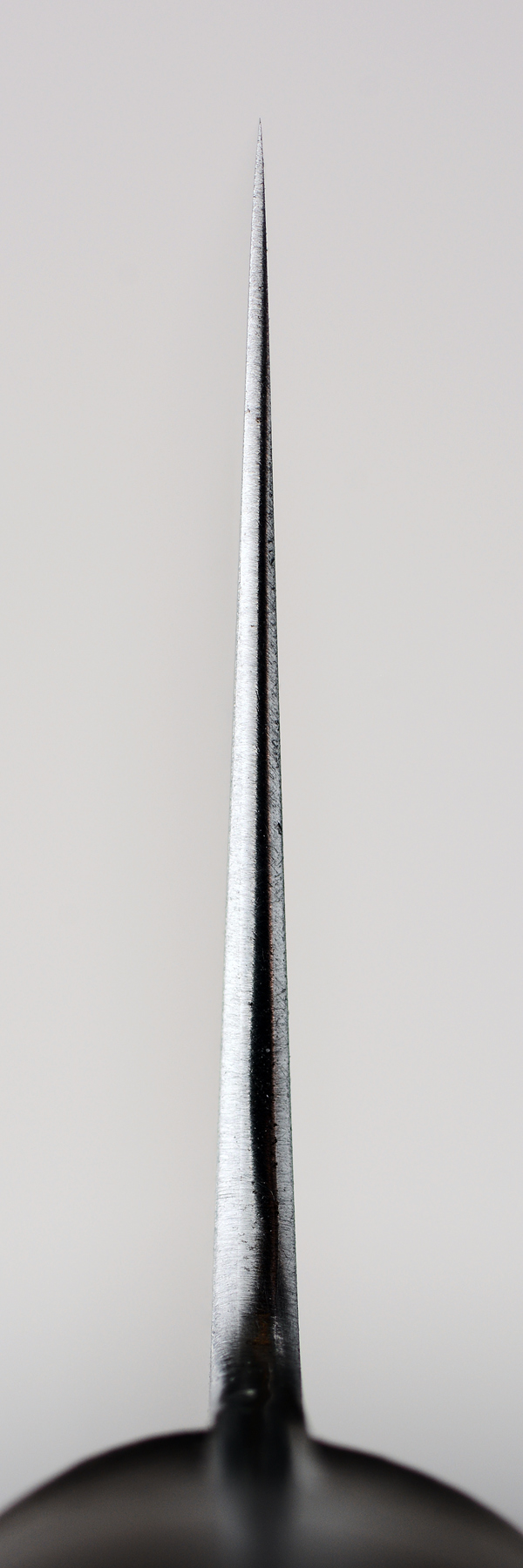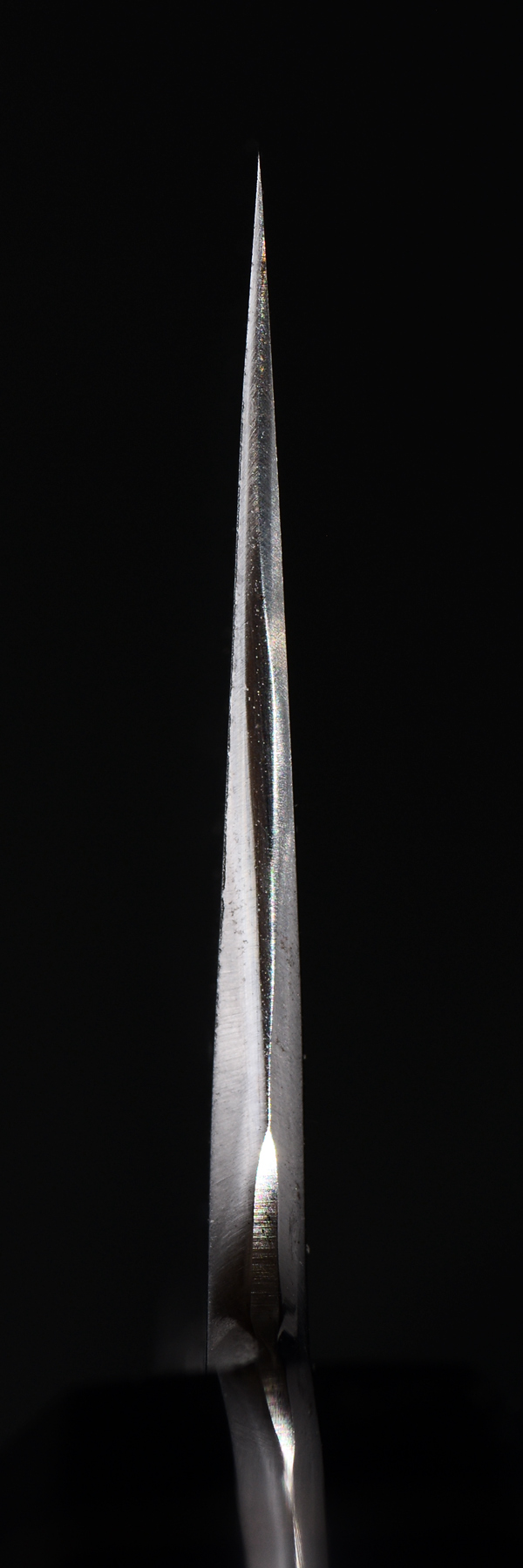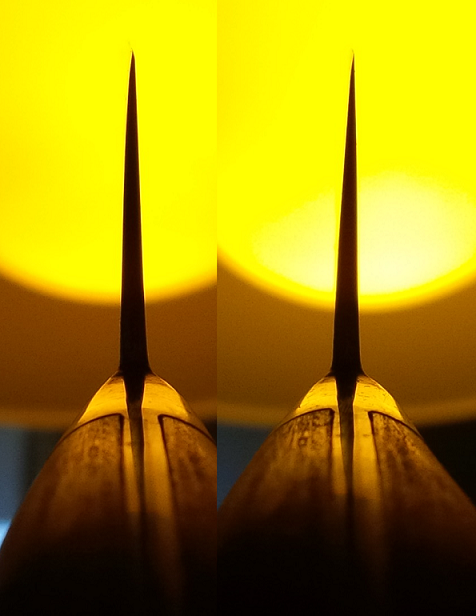For knives with very very thin blades, I prefer a tiny bit of meat immediately behind the edge:

(knife is Carter Muteki, thinned)
For thicker knives, I like having a pretty thin edge, as it is still pretty stable:

(knife is a Sakai Takayuki Shoshin Sakura, out of the box)
In both cases, I'm just a home user and don't beat up my edges at all.

(knife is Carter Muteki, thinned)
For thicker knives, I like having a pretty thin edge, as it is still pretty stable:

(knife is a Sakai Takayuki Shoshin Sakura, out of the box)
In both cases, I'm just a home user and don't beat up my edges at all.







